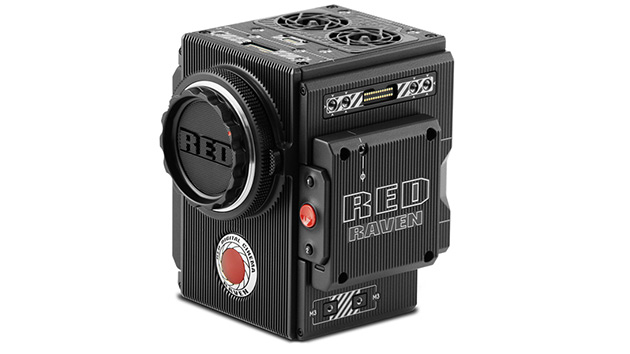New Direct-to-Edit Codecs Will be Recordable Simultaneously with Redcode Raw Following Mid-2016 Firmware Update
Red Digital Cinema said its DSMC2 camera line-up, including the Weapon, the Scarlet-W, and the Raven (pictured, top), will support Avid's DNxHR and DNxHD codecs via a free firmware upgrade coming later this year.
The Avid codecs are key to working in HD, 2K, 4K and higher resolutions in Media Composer, meaning Red's hardware is about to integrate more easily with direct-to-edit Avid workflows, eliminating any intermediate transcoding steps. Similar to Red's Apple ProRes workflow, Avid DNxHR and DNxHD formats can be recorded simultaneously with Redcode Raw to ensure the camera-original files retain as much information as possible.
Red Digital Cinema President Jarred Land had teased the arrival of additional built-in recording formats in the DMSC2 cameras for the last month or so, but only today made the Avid codec support official. "With the ability to shoot Redcode Raw simultaneously alongside Avid DNxHR and Avid DNxHD, they are getting the best of two worlds from both the acquisition and post perspectives," said Land in a prepared statement.
"For years, people have been shooting on Red and then editing within Avid software solutions," said Avid CEO Louis Hernandez Jr. in a prepared statement. "Now, with Avid codecs being an in-camera tool … it ensures that the mutual customers of both Red and Avid have a much more seamless integration for their projects."
Did you enjoy this article? Sign up to receive the StudioDaily Fix eletter containing the latest stories, including news, videos, interviews, reviews and more.










People still use Avid?
I don’t think it’s as much to do with Avid as it is a solid codec for the PC. Basically the PC version of ProRes.
On a PC you can read and edit ProRes, but you can’t encode in it (thanks Apple!). I own an iPhone, iPad, iPod, MacBook Air… But if want to encode in ProRes, I need to quit horsing around and pony up for that MacBook Pro. ??
I wouldn’t use Avid. It’s old, clunky, expensive, not intuitive, and it doesn’t keep up with technology (i.e. codecs, higher resolution support, etc.) nearly as well as Premiere or even Resolve. The entertainment industry sticks with it because they are understandably risk averse and slow to move when it comes to infrastructure.